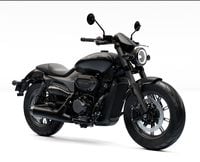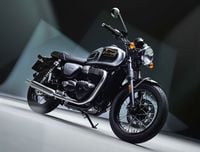The integrity of any threaded fastener is only as good as the guy who installs it. Meaning, of course, that if you over- or undertighten a bolt, you're headed for trouble. The question is, how do you know if the bolt in question is too tight, not tight enough or just right?
All threaded fasteners have a recommended torque setting you can find in your bike's shop manual or on a generic torque chart. But knowing the correct torque is only half the battle; you still need some way to measure it. That way is a torque wrench. Torque wrenches are available in three common styles. The most basic is the beam type. These use a simple pointer and scale to indicate the torque being applied. Next is the "clicker." Clickers use a micrometer-type scale built into the handle. The handle is rotated to a preset torque, say 10 foot-pounds. When the correct torque is reached, the wrench releases with an audible click. At the top of the food chain are dial-type torque wrenches. These incorporate a direct reading gauge that may be zeroed and a "tattle tale" to insure that the reading is dead-accurate every time. When selecting your torque wrench you'll need to decide which style you prefer, the appropriate drive size—1⁄4, 3⁄8 and 1⁄2 drives are the most common—the torque range and whether you want a wrench calibrated in inch-pounds, foot-pounds or Newton-meters of torque. The most versatile, and the one I'd recommend, would be a 3⁄8-drive, beam-type wrench with a range of zero–75 foot-pounds. Once you get in the habit of using it you'll wonder how you ever got along without it.










/cloudfront-us-east-1.images.arcpublishing.com/octane/GWCLFMIDN5FH6WWSGLCOSEZY7M.jpg)
/cloudfront-us-east-1.images.arcpublishing.com/octane/H6Z2IC7WYRBXZNQS4MI3SZ5KPQ.jpg)
/cloudfront-us-east-1.images.arcpublishing.com/octane/IWO5T5PBT5E4HFQ5GK47H5YXR4.jpg)
/cloudfront-us-east-1.images.arcpublishing.com/octane/OQVCJOABCFC5NBEF2KIGRCV3XA.jpg)
/cloudfront-us-east-1.images.arcpublishing.com/octane/F3O2DGLA4ZBDJGNVV6T2IUTWK4.jpg)
/cloudfront-us-east-1.images.arcpublishing.com/octane/ZXYQE3MHLFDSPKNGWL7ER5WJ4U.jpg)
/cloudfront-us-east-1.images.arcpublishing.com/octane/RDF24VM7WVCOBPIR3V3R4KS63U.jpg)
/cloudfront-us-east-1.images.arcpublishing.com/octane/W7RSIBFISNHJLIJESSWTEBTZRQ.jpg)
/cloudfront-us-east-1.images.arcpublishing.com/octane/AERA26ENRNBW3K324YWCPEXYKM.jpg)
/cloudfront-us-east-1.images.arcpublishing.com/octane/YWX3YX7QBBHFXFDMEEEKRG4XJE.jpg)
/cloudfront-us-east-1.images.arcpublishing.com/octane/I7OKI53SZNDOBD2QPXV5VW4AR4.jpg)
/cloudfront-us-east-1.images.arcpublishing.com/octane/IH52EK3ZYZEDRD3HI3QAYOQOQY.jpg)
/cloudfront-us-east-1.images.arcpublishing.com/octane/K2FSAN7OWNAXRJBY32DMVINA44.jpg)
/cloudfront-us-east-1.images.arcpublishing.com/octane/G4XK7JL24FCUTKLZWUFVXOSOGE.jpg)
/cloudfront-us-east-1.images.arcpublishing.com/octane/JJNXVAC27ZCDDCMTHTQZTHO55Y.jpg)









